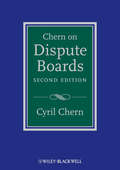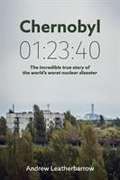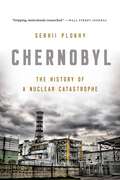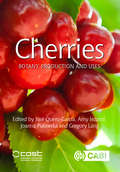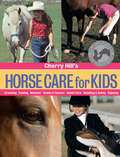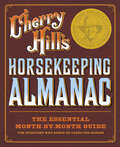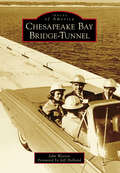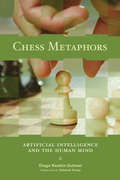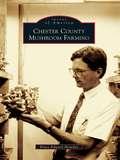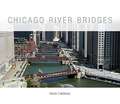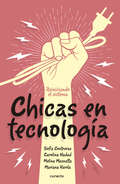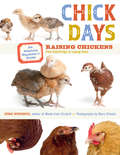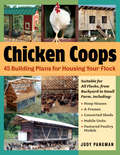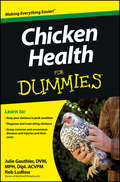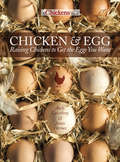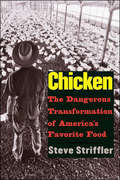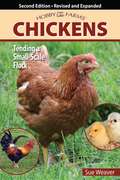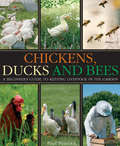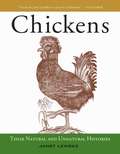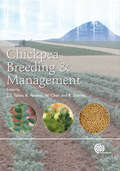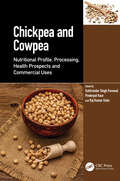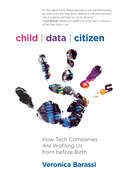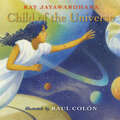- Table View
- List View
Chern on Dispute Boards: Practice And Procedure (Construction Practice Ser.)
by Cyril ChernA dispute board is a panel of impartial members, appointed at the outset of the construction contract, whose purpose is to monitor progress, resolve disputes as they arise and provide a forum for discussing difficult matters. This book provides an in depth analysis of dispute board law and detailed, practical explanations of how dispute boards work in construction contracts for those actively involved. as well as for those who need to learn the process. Important features of the book include: Explanation of how a dispute board works: Insider knowledge of board operations: Key documents to run a dispute board: Detailed discussion of dispute board law (covering key jurisdictions worldwide): Forms of practice and procedure, and sample documents Reviews of the previous edition "Chern's book provides an extremely practical guide, covering not only an introduction to the process but also providing check lists and sample documentation.... This book will be welcome by practitioners in the area and newcomers to the dispute board process." —The International Journal of Arbitration, Mediation and Dispute Management, November 2009 "This book will provide a very useful, perhaps essential, guide to parties commissioning large capital construction projects, those advising them and those bidding to carry out such works, and importantly, the project funders." —The Expert & Dispute Resolver "This is a must-have book for grown up contractors" —Tony Bingham, Building "His timely work …concentrating on what may prove to be the primary means of dispute resolution for major international construction projects is to be welcomed." —HHJ Humphrey Lloyd, QC, The International Construction Law Review "This excellent book on Dispute Boards is a must for every construction lawyer, engineer, architect and contractor who is either involved in Dispute Boards or wants to be" —Herbert Wilson, The Journal of the Dispute Board Federation
Chernobyl 01: The Incredible True Story Of The World's Worst Nuclear Disaster
by Andrew Leatherbarrow Elizabeth PetreyAt 01:23:40 on April 26th 1986, Alexander Akimov pressed the emergency shutdown button at Chernobyl's fourth nuclear reactor. It was an act that forced the permanent evacuation of a city, killed thousands and crippled the Soviet Union. The event spawned decades of conflicting, exaggerated and inaccurate stories. <p><p> This book, the result of five years of research, presents an accessible but comprehensive account of what really happened. From the desperate fight to prevent a burning reactor core from irradiating eastern Europe, to the self-sacrifice of the heroic men who entered fields of radiation so strong that machines wouldn't work, to the surprising truth about the legendary 'Chernobyl divers', all the way through to the USSR's final show-trial. The historical narrative is interwoven with a story of the author's own spontaneous journey to Ukraine's still-abandoned city of Pripyat and the wider Chernobyl Zone. <p> Complete with over 45 pages of photographs of modern-day Pripyat and technical diagrams of the power station, Chernobyl 01:23:40 is a fascinating new account of the world's worst nuclear disaster.
Chernobyl: The History of a Nuclear Catastrophe
by Serhii PlokhyFrom a preeminent historian of Eastern Europe, the definitive history of the Chernobyl nuclear disaster On the morning of April 26, 1986, Europe witnessed the worst nuclear disaster in history: the explosion of a reactor at the Chernobyl Nuclear Power Plant in Soviet Ukraine. Dozens died of radiation poisoning, fallout contaminated half the continent, and thousands fell ill. In Chernobyl, Serhii Plokhy draws on new sources to tell the dramatic stories of the firefighters, scientists, and soldiers who heroically extinguished the nuclear inferno. He lays bare the flaws of the Soviet nuclear industry, tracing the disaster to the authoritarian character of Communist party rule, the regime's control of scientific information, and its emphasis on economic development over all else. Today, the risk of another Chernobyl looms in the mismanagement of nuclear power in the developing world. A moving and definitive account, Chernobyl is also an urgent call to action.
Cherries
by J. Quero-García Amy Iezzoni Joanna Puławska Gregory LangSweet and sour cherries (Prunus avium and Prunus cerasus) are important fruit crops for which demand is high and growing. A significant number of new varieties, rootstocks and training systems have been released or developed in recent years in order to improve the efficiency and profitability of cherry orchards. Cherries: Botany, Production and Uses covers the genetics, ecophysiology, production, protection and uses of cherries. Presenting up-to-date scientific data and applied information, this book is invaluable for researchers, teachers and all professionals working in the cherries value chain.
Cherry Hill's Horse Care for Kids: Grooming, Feeding, Behavior, Stable & Pasture, Health Care, Handling & Safety, Enjoying
by Cherry HillCovering the essentials of equine care in a language appropriate for teen and preteen horse lovers, this guide provides everything young equestrians need to know to safely and enjoyably keep their horse healthy and happy. Veteran trainer Cherry Hill starts by making sure that the right animal is matched with the right rider, then progresses through feeding, grooming, behavior, safety, and health care. Encouraging their passion, Hill provides a roadmap for young horse enthusiasts to responsibly care for their cherished companion.
Cherry Hill's Horsekeeping Almanac: The Essential Month-by-Month Guide for Everyone Who Keeps or Cares for Horses
by Cherry HillKeep your horse happy and healthy throughout the entire year. Veteran trainer Cherry Hill provides a comprehensive month-by-month guide to horse care that includes seasonal stable chores and maintenance procedures that promote equine health. Reminding you to check for ticks in April, buy hay in July, and set up winter bedding in October, each month&’s reference charts, to-do lists, and climate notes will help you establish routines that follow the natural cycles of the animals and the land.
Chesapeake Bay Bridge-Tunnel (Images of America)
by John Warren Jeff HollandAt its opening in 1964, the Chesapeake Bay Bridge-Tunnel was named one of the "Five Wonders of the Modern World" by Reader's Digest magazine. It was the culmination of a concerted, decade-long push by a group of men, led by Lucius J. Kellam Jr., an Eastern Shore native and businessman who dreamed of opening up the remote Eastern Shore to the bustling Virginia mainland. This $200-million, 17.6-mile-long series of bridges, tunnels, islands, and trestle in the middle of the Chesapeake Bay--long dismissed as impractical and even impossible--won the attention of the world at its opening. It also brought an abrupt end to the ferry service that was long a cornerstone of the New York-to-Florida "Ocean Highway," shuttling millions of cars between the Eastern Shore and Hampton Roads.
Chess Metaphors: Artificial Intelligence and the Human Mind
by Diego Rasskin-GutmanHow the moves of thirty-two chess pieces over sixty-four squares can help us understand the workings of the mind. When we play the ancient and noble game of chess, we grapple with ideas about honesty, deceitfulness, bravery, fear, aggression, beauty, and creativity, which echo (or allow us to depart from) the attitudes we take in our daily lives. Chess is an activity in which we deploy almost all our available cognitive resources; therefore, it makes an ideal laboratory for investigation into the workings of the mind. Indeed, research into artificial intelligence (AI) has used chess as a model for intelligent behavior since the 1950s. In Chess Metaphors, Diego Rasskin-Gutman explores fundamental questions about memory, thought, emotion, consciousness, and other cognitive processes through the game of chess, using the moves of thirty-two pieces over sixty-four squares to map the structural and functional organization of the brain. Rasskin-Gutman focuses on the cognitive task of problem solving, exploring it from the perspectives of both biology and AI. Examining AI researchers' efforts to program a computer that could beat a flesh-and-blood grandmaster (and win a world chess championship), he finds that the results fall short when compared to the truly creative nature of the human mind.
Chester County Mushroom Farming
by Bruce Edward MowdayChester County is well known for its sprawling scenic views, rich farmland, the Main Line, and mushrooms. Chester County, and specifically the village of Kennett Square, is known as the mushroom capital of the world because of the quantity and quality of mushrooms grown there. Mushrooms have been around for centuries, with the French beginning cultivation in the 1600s, and mushroom farming began in Chester County more than 120 years ago. The earliest farmers were Quakers, but over the years members of the Irish, Italian, and Hispanic communities have joined the ranks of Chester County mushroom farmers. The local mushroom farmers were responsible for the forming of the American Mushroom Institute more than a half century ago.
Chicago River Bridges
by Patrick T. McbriartyChicago River Bridgespresents the untold history and development of Chicago's iconic bridges, from the first wood footbridge built by a tavern owner in 1832 to the fantastic marvels of steel, concrete, and machinery of today. It is the story of Chicago as seen through its bridges, for it has been the bridges that proved critical in connecting and reconnecting the people, industry, and neighborhoods of a city that is constantly remaking itself. In this book, author Patrick T. McBriarty shows how generations of Chicagoans built (and rebuilt) the thriving city trisected by the Chicago River and linked by its many crossings. This comprehensive guidebook chronicles more than 175 bridges spanning 55 locations along the Main Channel, South Branch, and North Branch of the Chicago River. With new full-color photography of existing bridges and more than one hundred black and white images of bridges past, the book unearths the rich history of Chicago's downtown bridges from the Michigan Avenue Bridge to the often forgotten bridges that once connected thoroughfares such as Rush, Erie, Taylor, and Polk Streets. Throughout, McBriarty delivers new research into the bridges' architectural designs, engineering innovations, and their impact on Chicagoans' daily lives, explaining how the dominance of the "Chicago-style" bascule drawbridge influenced the style and mechanics of bridges worldwide. Interspersed throughout are the human dramas that played out on and around the bridges, such as the floods of 1849 and 1992, the cattle crossing collapse of the Rush Street Bridge, or Vincent "The Schemer" Drucci's Michigan Avenue Bridge jump. A confluence of Chicago history, urban design, and engineering lore, Chicago River Bridges illustrates Chicago's significant contribution to drawbridge innovation and the city's emergence as the drawbridge capital of the world.
Chicago's 1933-34 World's Fair: A Century of Progress
by Bill CotterIt took six years and cost $100 million, but on May 27, 1933, the gates swung open on the biggest birthday party the city of Chicago had ever seen. The Century of Progress Exposition, better known as the 1933-34 Chicago World's Fair, commemorated the amazing progress that had been made since the founding of the city just 100 years earlier. Many of America's largest companies joined with countries from around the world to showcase their histories and advertise their newest products. The road to opening day was not an easy one, with the Great Depression making it look like the fair might never be built, but thousands of small investors stepped forward to help close the financial gap. The fair went on to an unprecedented second season, and when the gates finally closed after the last of the 39 million visitors went home, it had achieved something quite rare among world's fairs: earning a profit. This collection of rare photographs, previously unpublished, highlights the major attractions of the fair and the astonishing changes made between seasons.
Chicas en Tecnología®: Reiniciando el sistema
by Mariana Varela Carolina Hadad Sofía ContrerasLa tecnología tiene un papel determinante en lo cotidiano: el trabajo, la educación y la vida social. Pero es un área desigual para las mujeres. Este libro da cuenta de la brecha de género en tecnología y de la invisibilización de las pioneras y las líderes, pero es también una invitación a reiniciar el sistema, a que las mujeres consideren a la tecnología como una aliada para mejorar el mundo. La tecnología tiene un papel determinante en lo cotidiano: el trabajo, la educación y la vida social. Pero es un área profundamente desigual para las mujeres. La disparidad comienza en la infancia -a las niñas les regalan una cocinita y a los niños, videojuegos- y continúa durante la escolarización, la formación profesional, la capacitación, en el ambiente laboral o cuando deciden emprender. Las mujeres chocan constantemente con la estigmatización, la mirada estereotipada, la brecha salarial, discriminación y violencia. Cuando en 2015 Sofía Contreras, Carolina Hadad, Melina Masnatta y Mariana Varela crearon la organización Chicas en Tecnología® con el objetivo de achicar la brecha de género en ese campo, el feminismo no tenía la fuerza de hoy en la escena pública, y si bien se ganaron derechos, aún falta mucho. Con datos, fuentes, investigaciones, análisis y la experiencia de las autoras, este libro evidencia las barreras que las mujeres enfrentan en el ambiente tecnológico, pero además propone cambios e ideas en educación, liderazgo, emprendedorismo, mentoreo. Rescata de la invisibilización a las pioneras y demuestra por qué es fundamental que haya cada vez más líderes mujeres y multiplicidad de voces. Chicas en Tecnología® es una invitación a reiniciar el sistema, a que las mujeres consideren a la tecnología como una aliada para mejorar el mundo.
Chick Days: An Absolute Beginner's Guide to Raising Chickens from Hatching to Laying
by Jenna Woginrich Mars VilaubiJenna Woginrich chronicles the life journey of three chickens (Amelia, Honey, and Tilda) from fluffy, newly hatched bundles to grown hens laying eggs of their own. As you watch these chickens grow, you’ll learn everything you need to know about chicken behavior, feeding, housing, and health care. This playfully informative guide will inspire you to confidently raise your own feathered flock.
Chicken Coops: 45 Building Ideas for Housing Your Flock
by Judy PangmanJust like houses, chicken coops come in all shapes and sizes. Judy Pangman presents how-to drawings and conceptual plans for 45 coops — from the strictly practical to flights of fancy — guaranteed to meet the needs of every bird owner, however big or small your flock may be. Color photographs and innovative suggestions fill this encouraging guide, while lively anecdotes profile an array of coop builders and their various construction methods. Start building the coop of your chickens’ dreams!
Chicken Health For Dummies
by Ludlow Julie GauthierEverything you need to care for and keep happy, healthy chickensWith directives on diagnosing and treating sick or ailing chickens, as well as general information on how to keep chickens in peak condition, Chicken Health For Dummies is your go-to guide on how to best care for and keep chickens.Inside, you'll get everything you need to know about chicken health and wellness: an encyclopedia full of common and not-so-common diseases, injuries, symptoms, and cures that chicken owners may encounter. Chicken Health For Dummies provides chicken owners with one handy, all-encompassing resource. Helps you identify potential hazards and signs of ill health in your chickenShows you how to properly examine chickens to identify and isolate potential health issues before they spread to the rest of the flockAn encyclopedia full of common and uncommon diseases, injuries, symptoms, and cures for chickensChicken Health For Dummies joins Raising Chickens For Dummies and Building Chickens Coops For Dummies to round out the For Dummies reference library as a must-have resource for both rural and urban chicken owners.
Chicken and Egg
by Kate Osborne James Hermes Andy CawthrayThe age-old question of which comes first is finally answered in Chicken and Egg! For the purposes of egg-centric chicken keepers, it's the egg! A new approach to chicken keeping, Chicken and Egg is specifically geared toward hobby farmers and casual chicken keepers who wish to produce eggs of a particular color, flavor, and type. Whether the reader desires the delectable turquoise eggs of the Araucana or the chocolate brown eggs of the Blue Copper Maran, learn how it's possible to put the egg before the chicken. Written by two expert poultry breeders and specialists, Andy Cawthray and James Hermes, this new colorful handbook offers an edifying overview of the natural history of chickens and the science of egg production so that keepers better understand how to care for egg-layers, improve the quality of their eggs through diet and housing, and maximize their egg production for years to come. The authors have rounded up a few dozen chicken breeds and offer their hardboiled advice about which hens offer the most egg-cellect daily output.-Directory of the best egg-laying chicken breeds, plus colorful two-page spreads of the 20 most popular choices-Advice on how to select and set up your flock, including safe and affordable housing, runs, and coops-Selecting the best diets for your flock to maximize production and avoid egg failure-Essential information about brooding and laying, the birds' behavior, and solving problems within the flock-Specially commissioned artwork from watercolorist and illustrator Kate Osborne
Chicken: The Dangerous Transformation of America's Favorite Food
by Steve StrifflerAnthropologist Steve Striffler begins this book in a poultry processing plant, drawing on his own experiences there as a worker. He also reports on the way chickens are raised today and how they are consumed. What he discovers about America's favorite meat is not just unpleasant but a powerful indictment of our industrial food system. The process of bringing chicken to our dinner tables is unhealthy for all concerned, from farmer to factory worker to consumer. The book traces the development of the poultry industry since the Second World War, analyzing the impact of such changes as the destruction of the family farm, the processing of chicken into nuggets and patties, and the changing makeup of the industrial labor force. The author describes the lives of immigrant workers and their reception in the small towns where they live. The conclusion is clear: there has to be a better way. Striffler proposes radical but practical change, a plan that promises more humane treatment of chickens, better food for the consumer, and fair payment for food workers and farmers.
Chickens
by Sue WeaverHobby Farms Chickens: Tending a Small-Scale Flock for Pleasure and Profit is geared toward the hobby farmer looking to begin his or her own flock of chickens on a small farm or even backyard. Author Sue Weaver, who keeps various exotic breeds and countless barnies on her farm, is an expert on all things livestock and an avowed chicken fanatic. This photo-filled guide begins with "Chickens 101" and details the physiology of chickens, members of the Phasianidea family, providing beginning hobby farmers with a basic education in the chicken's unique physical makeup (from wings and feathers to beaks and digestive tracts), behavior, mating, and its unexpected high intelligence. The author offers advice on choosing the right types of chickens to get started: meat, egg, or dual purpose, or maybe even "just for pets." The book is an excellent resource for selecting which breed of chicken is best for the hobby farmer, based on the birds' traits, such as aggression, personality, noise factor, tolerance for heat, confinement, cold, etc. Chickens also provides information on selecting or building a suitable chicken coop for the hobby farmer's brood, outlining the basic requirements (lighting, ventilation, flooring, waterers, insulation, safety, and so forth). A detailed chapter on feeding chickens offers essential guidance on nutrition, commercial feeds, supplements, and water requirements. For the chicken hobby farmer looking to start with a clutch of baby chicks (from his own hen or an outside source), the author provides excellent info on incubators and hatching as well as all of the accommodations and preparation required for hens in the nest box. A chapter on selling eggs and broilers provides timetables, requirements, and dos and don'ts to get a hobby farmer's business off on the right foot. All chicken keepers will find the chapter on health of particular value, with expert advice on preventing common problems and dealing various maladies and diseases. Much detailed information about all of the topics in the book is encapsulated in sidebars. A glossary of over 125 terms plus a detailed resource section of chicken and poultry associations, books, and websites complete the volume. Fully indexed.
Chickens, Ducks and Bees: A Beginner's Guide To Keeping Livestock In The Garden
by Paul PeacockGrowing your own vegetables often leads gardeners to want to go one step further and keep some livestock. Chickens, ducks and bees are the most likely candidates for the first time livestock owner - especially if you live in a town or have only a small amount of land. They can all be kept happily together. Keeping these animals is a fun and absorbing hobby and is a great antidote to stress. There is nothing more rewarding than the collection of your own fresh eggs and honey. The book is full of sound, practical advice and looks at exactly what you need to get started: the equipment, housing, space and feed. Taking the breeds best suited for the smaller garden, town garden, or allotment, the responsible care and management of these animals is thoroughly covered in a friendly, approachable style with their welfare always in mind. Chickens: from breed selection to housing, feeding, care, and health issues this book provides simple, no nonsense information about how hens live, their needs and lifestyle and how to keep happy, healthy and productive hens. Ducks: here is all you need to know to introduce these entertaining animals to the garden - their walking requirements, their feed, and the surprisingly small amount of water they need. Duck eggs are great for baking and this book shows you how to keep your ducks happy and laying. Bees: there are many more people now interested in keeping bees. Paul Peacock shows you how to get started, where to get help, what equipment you need, and how to handle bees and harvest their honey. It emphasises gentle bees, and covers the control of varroa and other potential bee diseases.
Chickens, Ducks and Bees: A beginner's guide to keeping livestock in the garden
by Paul PeacockGrowing your own vegetables often leads gardeners to want to go one step further and keep some livestock. Chickens, ducks and bees are the most likely candidates for the first time livestock owner - especially if you live in a town or have only a small amount of land. They can all be kept happily together. Keeping these animals is a fun and absorbing hobby and is a great antidote to stress. There is nothing more rewarding than the collection of your own fresh eggs and honey. The book is full of sound, practical advice and looks at exactly what you need to get started: the equipment, housing, space and feed. Taking the breeds best suited for the smaller garden, town garden, or allotment, the responsible care and management of these animals is thoroughly covered in a friendly, approachable style with their welfare always in mind. Chickens: from breed selection to housing, feeding, care, and health issues this book provides simple, no nonsense information about how hens live, their needs and lifestyle and how to keep happy, healthy and productive hens. Ducks: here is all you need to know to introduce these entertaining animals to the garden - their walking requirements, their feed, and the surprisingly small amount of water they need. Duck eggs are great for baking and this book shows you how to keep your ducks happy and laying. Bees: there are many more people now interested in keeping bees. Paul Peacock shows you how to get started, where to get help, what equipment you need, and how to handle bees and harvest their honey. It emphasises gentle bees, and covers the control of varroa and other potential bee diseases.
Chickens: Their Natural and Unnatural Histories
by Janet LembkeFramed by the author’s personal experience with backyard hens, Chickens: Their Natural and Unnatural Histories explores the history of the chicken from its descent from the dinosaurs to the space-age present. En route, Lembke surveys chickens in ancient Greece, the Middle Ages, the Renaissance, the nineteenth century, and modern times, including the role of chickens in Jewish and Muslim practices. She also investigates the birds’ contributions to science and their jaunty appearances in literature. Eggs receive a chapter of their own, as does chicken cuisine, comprising recipes from the Roman Empire to today’s favorites. Stories about chickens appear, too, often written by those who keep them, including the painter Grandma Moses, the man who holds Cleveland’s Farm Animal Permit No. 17, and Brenda, who had to give her young roosters a talking-to for behaving like sheep. Chickens have only recently come to a sorry pass in the Western world, where broilers and laying hens are factory-farmed. Lembke investigates the fate of such birds and explores the sustainable, humane alternatives to raising birds for meat and eggs. A celebration of the chicken in its every aspect, Chickens is sure to delight the chicken fancier, the backyard chicken keeper, and everyone concerned about where our food comes from and how we can treat animals more compassionately.
Chickpea Breeding and Management
by B. Sharma S. S. Yadav R. J. Redden W. ChenThis authoritative account by international experts covers all aspects of chickpea breeding and management, and the integrated pest management and biotechnology applications that are important to its improvement.
Chickpea and Cowpea: Nutritional Profile, Processing, Health Prospects and Commercial Uses
by Raj Kumar Salar Sukhvinder Singh Purewal Pinderpal KaurLegumes can act as good sources of nutrients, especially for those who are suffering from protein related nutritional deficiency. Chickpea (Cicer arietinum) and cowpea (Vigna unguiculata) are annual legumes grown throughout the world as food and feed. The presence of specific nutrients with many health benefits makes them a valuable food commodity. Chickpea and Cowpea: Nutritional Profile, Processing, Health Prospects and Commercial Uses explores the status of chickpea and cowpea in terms of their production, nutritional composition, processing mediated changes, and methods to remove antinutrients, bioactive peptides and their related health benefits. This book also demonstrates the key features of chickpea and cowpea which will make them an ideal substrate to be processed at a commercial scale. It covers all the aspects of latest research based on chickpea and cowpea. Features - Discusses information related to biochemistry of chickpea and cowpea components - Highlights comprehensive and meaningful information related to physical and functional properties - Explains processing mediated changes in nutritional profile of chickpea and cowpea - Provides latest scientific facts related to chickpea and cowpea starch - Explores various bioactive components and related health benefits - Demonstrates storage conditions for chickpea and cowpea In depth information is presented regarding various nutrient components and health benefits of chickpea and cowpea, which will provide meaningful information for product formulation. This book covers all aspects of recent research about the chickpea and cowpea while unravelling the hidden industrial potential of chickpea and cowpea.
Child Data Citizen: How Tech Companies Are Profiling Us from Before Birth
by Veronica BarassiAn examination of the datafication of family life--in particular, the construction of our children into data subjects.Our families are being turned into data, as the digital traces we leave are shared, sold, and commodified. Children are datafied even before birth, with pregnancy apps and social media postings, and then tracked through babyhood with learning apps, smart home devices, and medical records. If we want to understand the emergence of the datafied citizen, Veronica Barassi argues, we should look at the first generation of datafied natives: our children. In Child Data Citizen, she examines the construction of children into data subjects, describing how their personal information is collected, archived, sold, and aggregated into unique profiles that can follow them across a lifetime.
Child of the Universe
by Ray JayawardhanaPerfect for fans of The Wonderful Things You Will Be and That's Me Loving You, this picture book by a renowned astrophysicist is a lyrical meditation on the preciousness of one child and the vastness of the universe.Just like the sun gives shine to the moon,you light up the world beyond this room . . .You are grand and marvelous, strong and mysterious.The history of the world is in your fingertips.A lyrical meditation on the preciousness of one child and the vastness of the universe, this gorgeously illustrated picture book shares the immensity of a parent's love along with the message that we are all connected to the broader cosmos in important and intimate ways. A perfect bedtime read-aloud, Child of the Universe is a book to cherish forever.The author is an astrophysicist who has been fascinated by the universe since he was a child. As a parent, he has developed a new appreciation for the deep connections between billions of years of cosmic evolution and this one tiny human.
